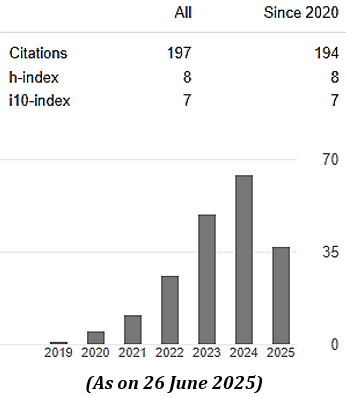STRENGTH BEHAVIOR OF MORTAR USING SLAG AS PARTIAL REPLACEMENT OF CEMENT
DOI:
https://doi.org/10.47981/j.mijst.03(01)2011.24(%25p)Keywords:
Slag, Cement, Mortar, Compressive Strength, Tensile Strength, HydrationAbstract
This paper presents an experimental investigation carried out to study the effects of Ground Granulated Blast Furnace Slag
(GGBFS) on strength development of mortar and the optimum use of slag in mortar. Cement was partially replaced with seven
percentages (10%, 20%, 30%, 40%, 50%, 60% and 70%) of slag by weight. Ordinary Portland cement (OPC) mortar was also
prepared as reference mortar. A total of 400 cube and briquet mortar specimens were cast and compressive as well as tensile
strength of the mortar specimens were determined at curing age of 3, 7, 14, 28, 60, 90 and 180 days. Test results show that
strength increases with the increase of slag up to an optimum value, beyond which, strength values start decreasing with further
addition of slag. Among the seven slag mortars, the optimum amount of cement replacement is about 40%, which provides 19%
higher compressive strength and 25% higher tensile strength as compared to OPC mortar.
Downloads
References
Downloads
Published
Issue
Section
License
Copyright (c) 2019 MIST INTERNATIONAL JOURNAL OF SCIENCE AND TECHNOLOGY

This work is licensed under a Creative Commons Attribution-NonCommercial 4.0 International License.
MIJST follows the open access policy.

This work is licensed under a Creative Commons Attribution-NonCommercial 4.0 International License. This allows anyone to copy, share, distribute, and modify the work for non-commercial purposes, where the original work and source should be properly credited.
















